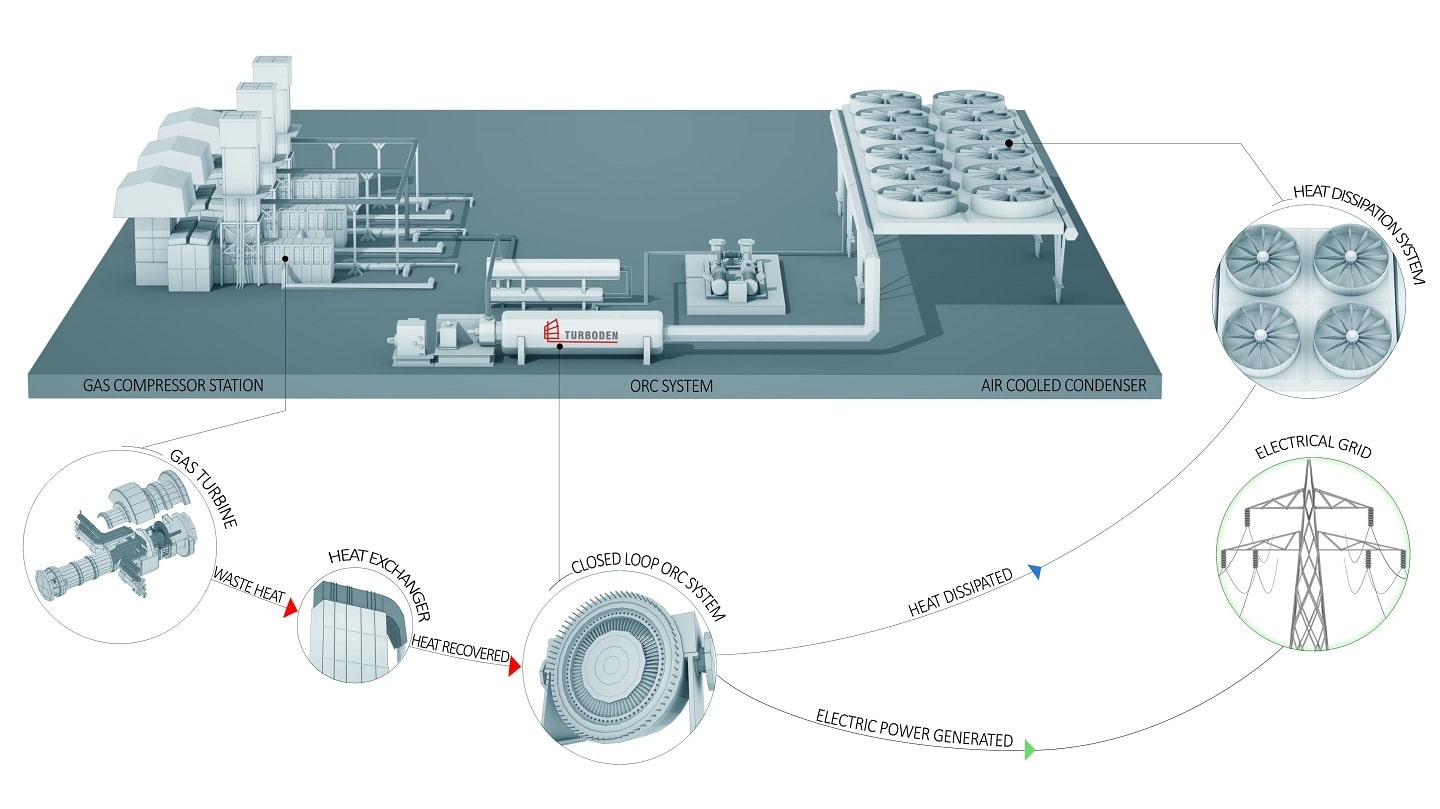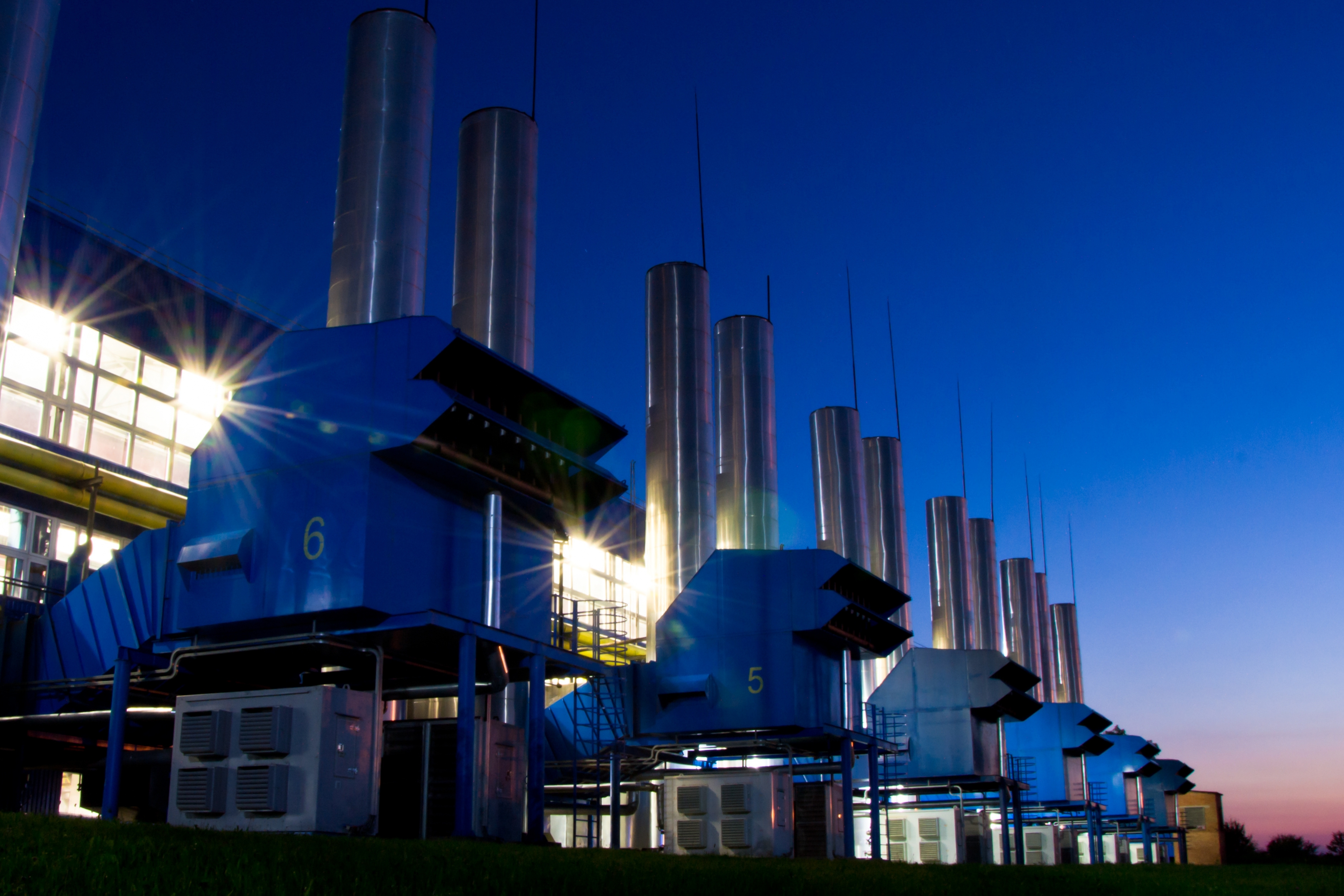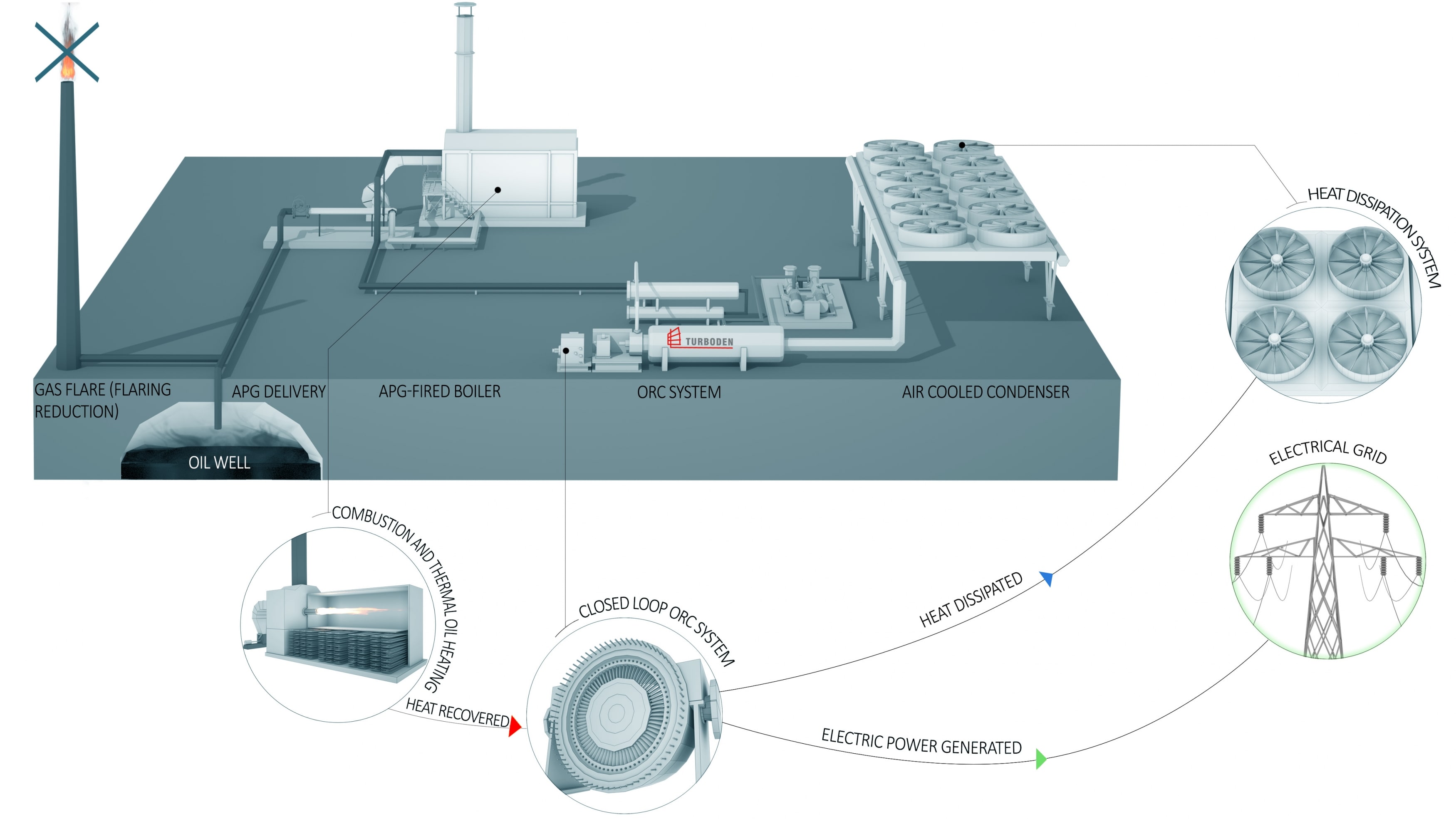Oil & Gas
Turboden Organic Rankine Cycle (ORC) units enable power production (up to 40 MW per single turbine) by recovering excess waste heat from the exhausts of gas turbines or reciprocating engines, or from the hot streams typical in Oil & Gas industry. ORC turbogenerators provide a solution to improving the efficiency of typical Oil & Gas processes, by allowing users to reduce their environmental footprint through converting waste, high-to-low grade heat, into mechanical/electric power.
6
plants*57.8
MWe total2011
first plant delivered*2 plants are under construction
-
HEAT RECOVERY IN A GAS COMPRESSOR STATION: HOW IT WORKS
-
TURBODEN OIL&GAS APPLICATION
-
TURBODEN & SIEMENS ENERGY FOR A FIRST OF ITS KIND PROJECT IN EGYPT
-
DECARBONIZED GAS COMPRESSOR STATIONS WITH ORC TECHNOLOGY
-
GASCO DAHSHOUR WASTE HEAT RECOVERY PROJECT: LATEST UPDATES
FIELDS OF APPLICATION OF TURBODEN ORC IN THE O&G INDUSTRY:
- Gas compressor stations
- Gas storage
- Oil pumping stations
- Sea water injection systems
- Boilers
- Gas turbines or internal combustion engines
- Refinery hot streams
- Thermal oil used in Oil & Gas process
- Geothermal and associated hot water
GAS COMPRESSOR STATION

ORC technology, thanks to the use of specific organic working fluids, permits an efficient exploitation of exhaust gas streams, such as small-to-medium size gas turbines in gas compressor stations. Depending on the characteristics of each specific project, i.e. number of gas turbines available for heat recovery, possible layout constrains, water availability on site etc., the ORC solution is designed to best fit with such characteristics.

- Fuel-free electricity generation
- Gas saving in case of mechanical drive or electrical motor-driven compressors
- CO2 emissions reduction
- Reliable electricity production, even in remote locations
ASSOCIATED PETROLEUM GAS (APG)

Associated Petroleum Gas (APG) can often be found at Oil & Gas extraction sites. When the chemical composition of APG is poor and therefore its exploitation is problematic with traditional technologies, it is typically burned via torches. In such cases, the flare gas is undoubtedly wasted. ORC is a viable technology that can use the energy content of flare gas to produce electric power. The heat recovery configuration involves a boiler fueled by flare gas that heats up a thermal vector fluid, typically thermal oil. The thermal oil feeds the ORC unit, which then produces electricity and thermal power at low temperature (in case of a CHP unit).
PROCESS HOT STREAMS
Both the upstream and the downstream sectors are characterized by the presence of heat sources at medium-to-low temperature. On the one hand, exhausted extraction wells are often full of hot water. On the other hand, oil refining processes take place at high temperatures and the products (diesel, kerosene, etc.) exit the process at temperatures between 150°C and 250°C and must be cooled down before storage. In both cases, an ORC with the proper working fluid can exploit these low enthalpy sources to produce useful power.
TYPICAL SOLUTIONS
| ORC size | location | customer | status | notes |
|---|---|---|---|---|
| 1 MWe | Rosetown, Canada | TransGas | In operation since 2011 | Electric power production from waste heat from a 3.5 MW Solar gas turbine in a gas compressor station |
| 1 MWe | Hodzhaabad, Andijan Region, Uzbekistan | Uztransgaz | In operation since 2021 | Electric power production from waste heat from a 3x15 MW GE gas turbines in a gas compressor station |
| 1.8 MWe | Perm, Russia | LUKoil | In operation since 2015 | Electric power production from waste heat from flare gas |
| 25 MWe | Dahshour, Egypt | Sacyr Fluor S.A./Egyptian Natural Gas Company (Gasco) | Under construction | Electric power production from waste heat from 5 gas turbines (4 in operation and 1 in stand-by) of 30 MWe each in a gas compress station |
| 19 MWe | Cold Lake (AB), Canada | Strathcona Resources Ltd. | Under construction | Electric power production from oil extraction (SAGD) |
| 10 MWe | Washington Court House, OH | Tallgrass Energy Ventures LLC | Under construction | Electric power production from waste heat from 3 gas turbines |
Other Solutions
ENERGY EFFICIENCY
RENEWABLES










